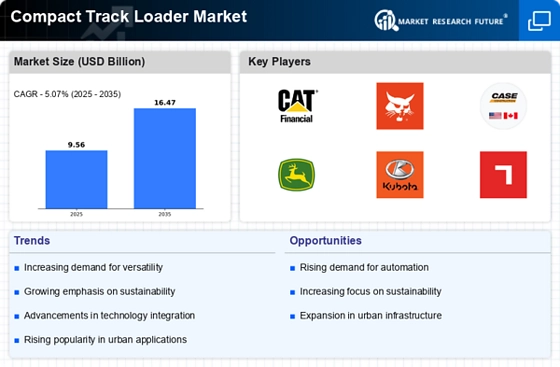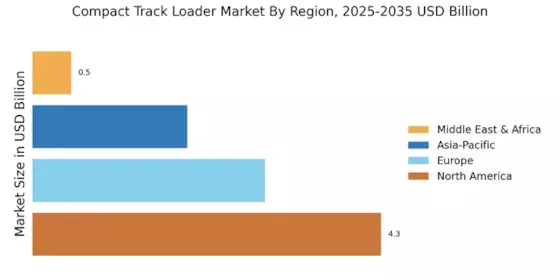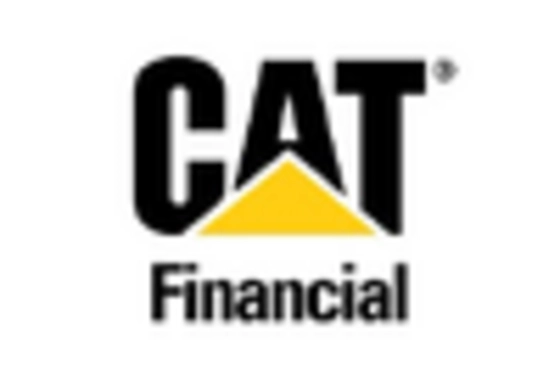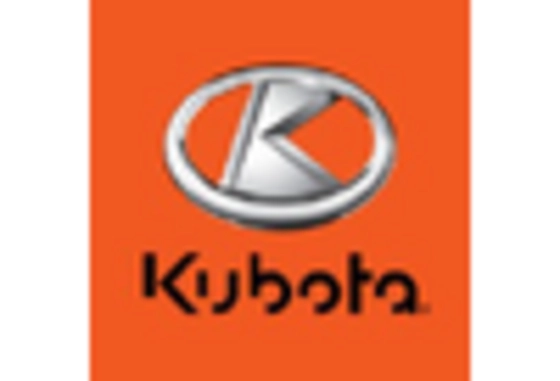Expansion of Rental Services
The Compact Track Loader Market is benefiting from the expansion of rental services, which provide flexible access to machinery without the burden of ownership. As construction projects become more project-based, companies are increasingly opting to rent equipment rather than purchase it outright. In 2025, the equipment rental market is projected to grow at a rate of 7.0%, indicating a shift in how construction firms manage their resources. This trend is particularly advantageous for compact track loaders, as their versatility makes them ideal for a wide range of applications. The rise of rental services not only increases the accessibility of compact track loaders but also stimulates demand within the Compact Track Loader Market, as more companies seek to leverage these machines for short-term projects.
Increased Construction Activities
The Compact Track Loader Market is experiencing a surge in demand due to heightened construction activities across various sectors. Urbanization and infrastructure development projects are driving the need for efficient and versatile machinery. In 2025, the construction sector is projected to grow at a rate of 5.2% annually, which directly influences the demand for compact track loaders. These machines are favored for their ability to operate in confined spaces while providing substantial lifting capabilities. As construction companies seek to enhance productivity and reduce labor costs, the adoption of compact track loaders is likely to increase. This trend indicates a robust growth trajectory for the Compact Track Loader Market, as these machines become integral to modern construction practices.
Growing Emphasis on Sustainability
The Compact Track Loader Market is increasingly influenced by the growing emphasis on sustainability and eco-friendly practices. As environmental regulations become more stringent, manufacturers are compelled to develop machines that minimize emissions and fuel consumption. In 2025, the market for eco-friendly construction equipment is expected to grow by 5.5%, reflecting a shift towards sustainable practices in the industry. Compact track loaders equipped with cleaner engines and hybrid technologies are gaining traction among environmentally conscious companies. This trend not only aligns with global sustainability goals but also enhances the marketability of compact track loaders. Therefore, the Compact Track Loader Market is likely to evolve in response to these sustainability initiatives, fostering innovation and compliance.
Technological Innovations in Machinery
The Compact Track Loader Market is being transformed by rapid technological innovations. Advancements in automation, telematics, and machine connectivity are enhancing the functionality and efficiency of compact track loaders. For instance, the integration of GPS and remote monitoring systems allows operators to optimize performance and reduce downtime. In 2025, it is anticipated that the market for smart construction equipment will expand, with a projected growth rate of 6.1%. This trend suggests that manufacturers are increasingly focusing on developing technologically advanced compact track loaders that meet the evolving needs of end-users. As a result, the Compact Track Loader Market is likely to see a shift towards more sophisticated machinery, which could redefine operational standards.
Rising Demand for Landscaping Equipment
The Compact Track Loader Market is witnessing a notable increase in demand for landscaping applications. As urban areas expand, the need for landscaping and maintenance of green spaces becomes more pronounced. Compact track loaders are particularly suited for this purpose due to their maneuverability and ability to handle various attachments, such as mowers and tillers. In 2025, the landscaping equipment market is expected to grow by approximately 4.5%, further propelling the demand for compact track loaders. This growth is indicative of a broader trend where landscaping companies are increasingly investing in versatile machinery to enhance service offerings. Consequently, the Compact Track Loader Market stands to benefit significantly from this rising demand.


















Leave a Comment